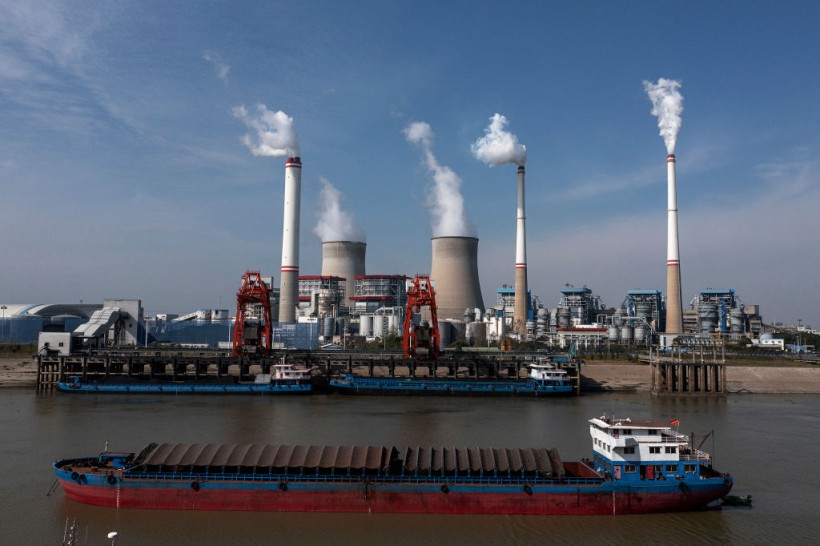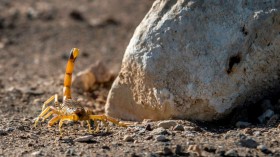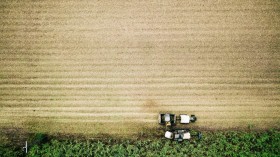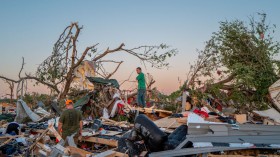(Photo : Photo by Getty Images)
A new study showed that the Earth's behavior changes dramatically in "chaotic" ways as human-induced climate change worsens.
The Earth System (ES), as shown and described by a Landau-Ginzburg model, predicted that Earth will become a chaotic world, "with dire consequences",a NewsBreak report said, drawing a broad picture of the full potential impact of human activity on the chaotic climate.
"The implications of climate change are well known (droughts, heat waves, extreme phenomena, etc.)," study researcher Orfeu Bertolami told Live Science.
"If the Earth System gets into the region of chaotic behavior, we will lose all hope of somehow fixing the problem."
According to the study authors and scientists in the Department of Physics and Astronomy at the University of Porto in Portugal, the climate model simulated how our planet heads to catastrophe if climate change and use of fossil fuels are not reduced.
The Shifting Climate
It is the Earth's nature to experience massive changes in climate patterns from one stable equilibrium to another, driven mostly by external factors like changes in Earth's orbit or surge in volcanic activity.
However, studies suggested that we are entering a new phase of climate shift driven by human activity - a new era called the Anthropocene.
The Anthropocene is a period of human-influenced climate systems that has never occurred before.
"Furthermore, we find that the equilibrium point for temperature fluctuations can exhibit bifurcations and a chaotic pattern if the human impact follows a logistic map," according to the research posted in the preprint database arXiv.
The researchers modeled the Anthropocene as a phase transition, a process observed in matter of transfers between phases, such as transition phase from a solid to a liquid.
In the case of the Earth's climate, a phase transition leading to a new pattern of seasons and weather indicated a sudden and rapid change in Earth's climate patterns.
Also read: Scientists Discover the Source of the World's Most Active Volcano
Where is Earth's Climate Headed?
These new weather patterns developed due to human activity have become one of the most pressing problems of climate science.
It is now only a matter of years for this finite amount of human-driven impact to drive the world into chaos, leading to different outcomes.
To account for these regular trajectories in the phase space, a mathematical tool called a logistic map was employed by the researchers to describe climate variables and to what extent they naturally reach a limit.
"Our influence on the environment is definitely growing, and it has been for over a century. But it will naturally reach a limit," the researchers explained.
"For example, the human population can only grow so large and can only have so many carbon-emitting activities; and pollution will eventually degrade the environment."
The researchers found that a tool of such kind can capture the future trajectory of carbon output very well, given that at some point in the future, they will reach a maximum limit.
The experts have also explored how a human logistic map and carbon output could evolve with time to examine how the human-driven phase transition affects the evolution of the world's climate.
Related article: Avalanche Due to Late-Season Snowfall Results in Several Casualties in Colorado
© 2024 NatureWorldNews.com All rights reserved. Do not reproduce without permission.

![Chimpanzee Behavior: Chimp Wars Show That Murder and Violence are Not Exclusive to Humans [Report]](https://1471793142.rsc.cdn77.org/data/thumbs/full/70473/280/157/50/40/chimpanzee-behavior-chimp-wars-show-that-murder-and-violence-are-not-exclusive-to-humans-report.jpg)
![Bison Herd Consisting of 170 Reintroduced Individuals in Romania Could Store Carbon Emissions Equivalent to 43,000 Cars [Study]](https://1471793142.rsc.cdn77.org/data/thumbs/full/70533/280/157/50/40/bison-herd-consisting-of-170-reintroduced-individuals-in-romania-could-store-carbon-emissions-equivalent-to-43-000-cars-study.jpg)



